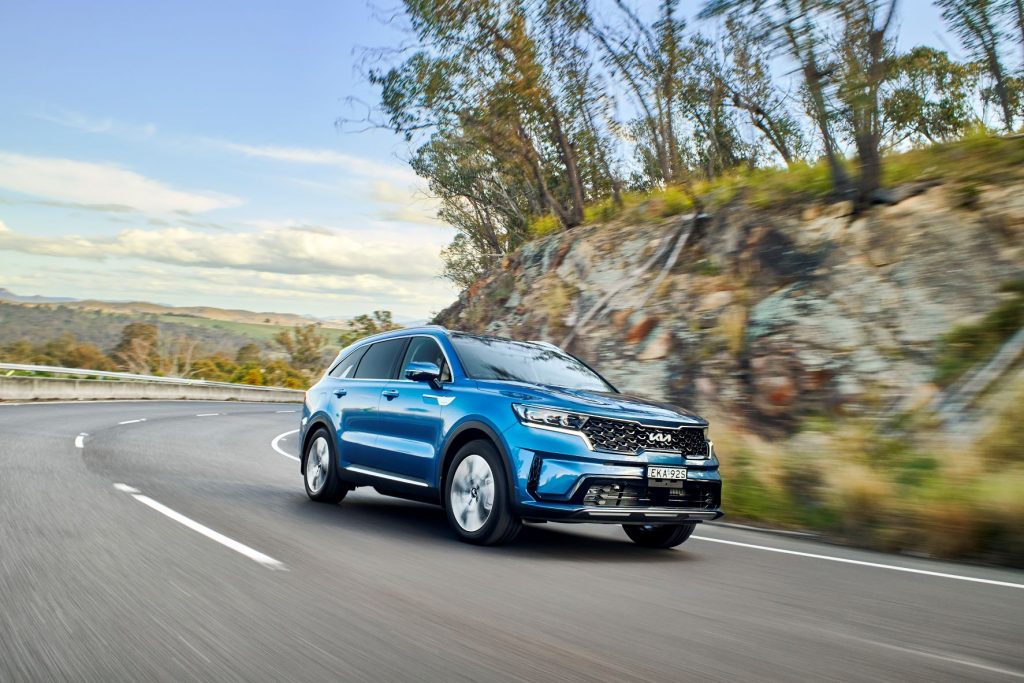Chris Riley tests the 2022 Kia Sorento PHEV GT-Line with pricing, specs, ride and handling, safety, verdict and everything the over-50 driver needs to know.
Summary: Despite really wanting to like the Kia Sorento PHEV, Chris Riley decides he’d rather take the diesel version.
Kia Sorento PHEV GT-Line
Pricing: $80,330 (plus on road costs – $81,990 driveaway). Premium paint (all but Clear White) $695
Warranty: Seven years, unlimited kilometres, seven years roadside assist, seven years capped price servicing
Safety: 5-star ANCAP
Engine: 1.6-litre four-cylinder turbo intercooled petrol plus permanent magnet electric motor
Power: 132kW at 5500rpm, internal combustion engine; 67kW at 2100rpm, electric engine (combined power 195kW)
Torque: 304Nm at 1500rpm
Voltage: 360 volts
Charging time: 205 minutes
Transmission: 6-speed sports automatic dual clutch, all wheel drive
Body: 4810mm (long); 1900mm (wide); 1695mm (high)
Weight: 2052kg
Towing capacity: 1350kg (braked)
Wheels: 19-inch alloy
Tyres: 235/55R19
Ground clearance: 175mm
Turning circle: 11.6m
Fuel tank capacity: 67 litres
Official consumption: 1.6L/100km (91 RON fuel)
Consumption on test: 6.0L/100 (1085km)
seniordriver consumption on test: 6.8L/100km (266km)
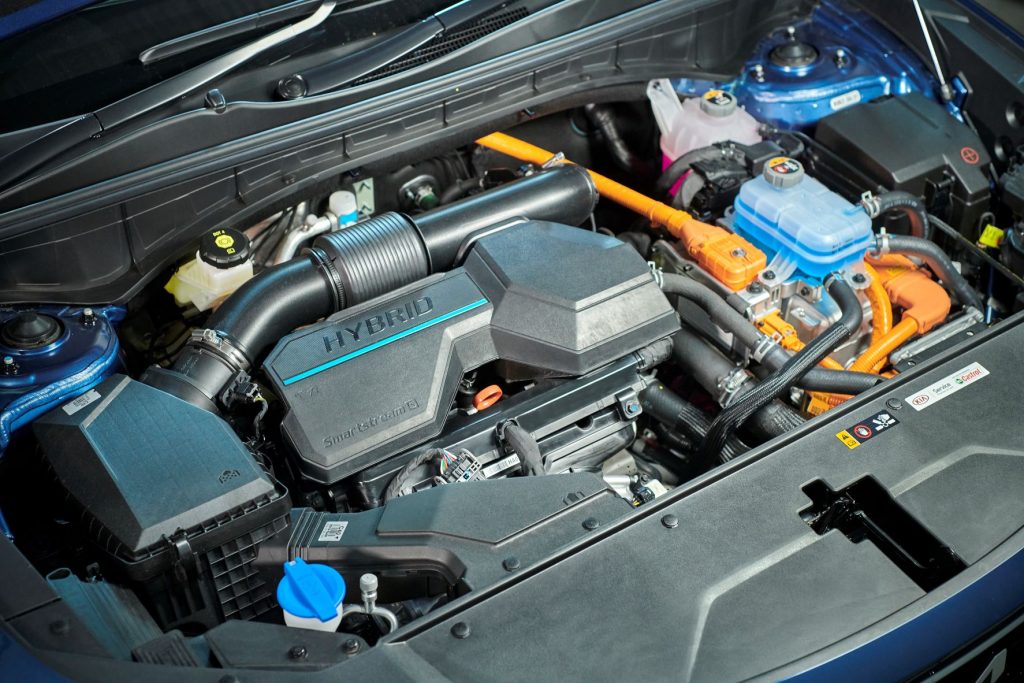
[review]
Sorento is the largest of Kia’s SUVs and seats seven.
Now in its fourth generation, it comes in four grades and with a choice of three powertrains.
There’s a 3.5-litre petrol V6, 2.2-litre turbo diesel and now a 1.6-litre turbo plug-in petrol-electric hybrid, with ultra-low emissions.
In fact, it’s the only large, mainstream SUV on the market to offer the option of all three drivetrains, but it comes at a premium and is it worth it?
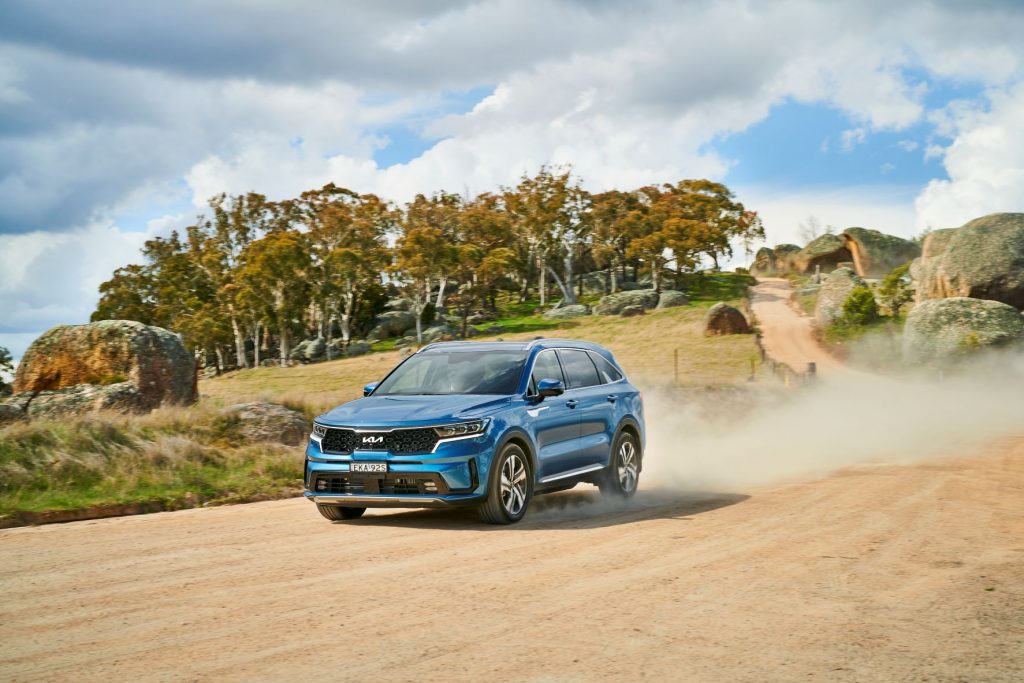
What’s it cost?
Prices for Sorento start from $49,290 driveaway for the base model, petrol-powered front-wheel drive S.
The diesel is $3000 more, but also comes with all-wheel drive.
As well as the usual Eco and Sport options, all-terrain mode features dial-up Mud, Snow and Sand settings.
Default is EV and Eco mode.
There are four grades – S, Sport, Sport+ and GT-Line.
But PHEV is available only in GT-Line trim and will set you back $81,990 driveaway.
That’s right, $81,990 driveaway – $14,700 more than the top-of-the-line diesel!
Oh, and any colour apart from Clear White attracts a $695 premium.
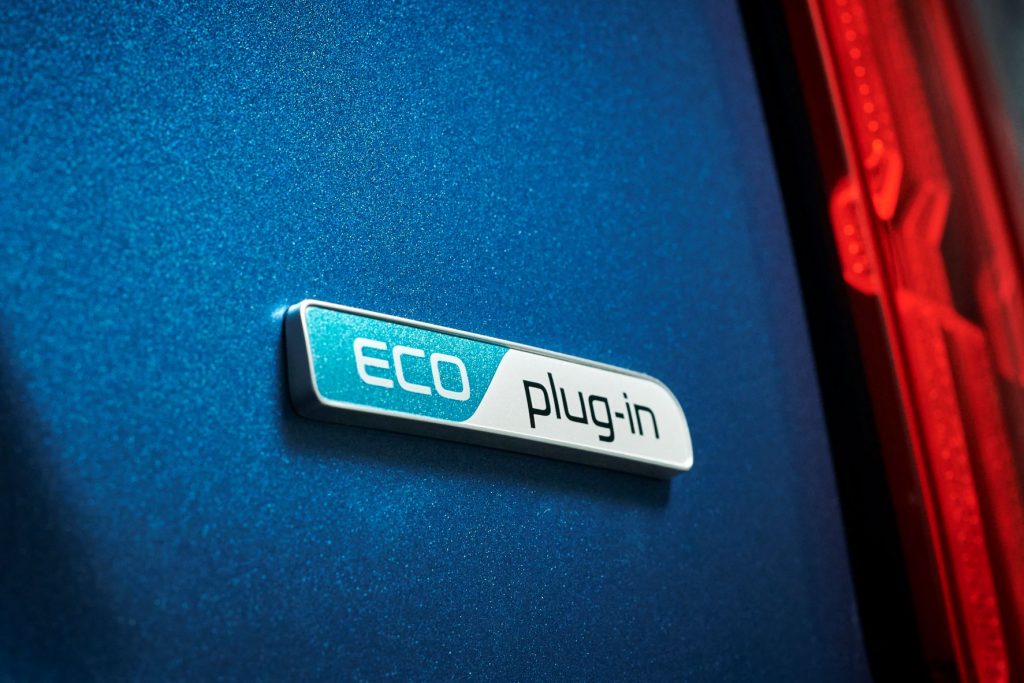
Kia’s designers sought to maintain the robust, tough-looking aesthetic of earlier generations, while making it more refined and elegant – sporty even.
Note, however, PHEV rides on downsized 19-inch alloys, rather than the 20s of the top petrol and diesel models (it’s flashy rubber though).
The attractive, upmarket cabin introduces sophisticated next-gen design and in GT-Line this is based around twin digital displays.
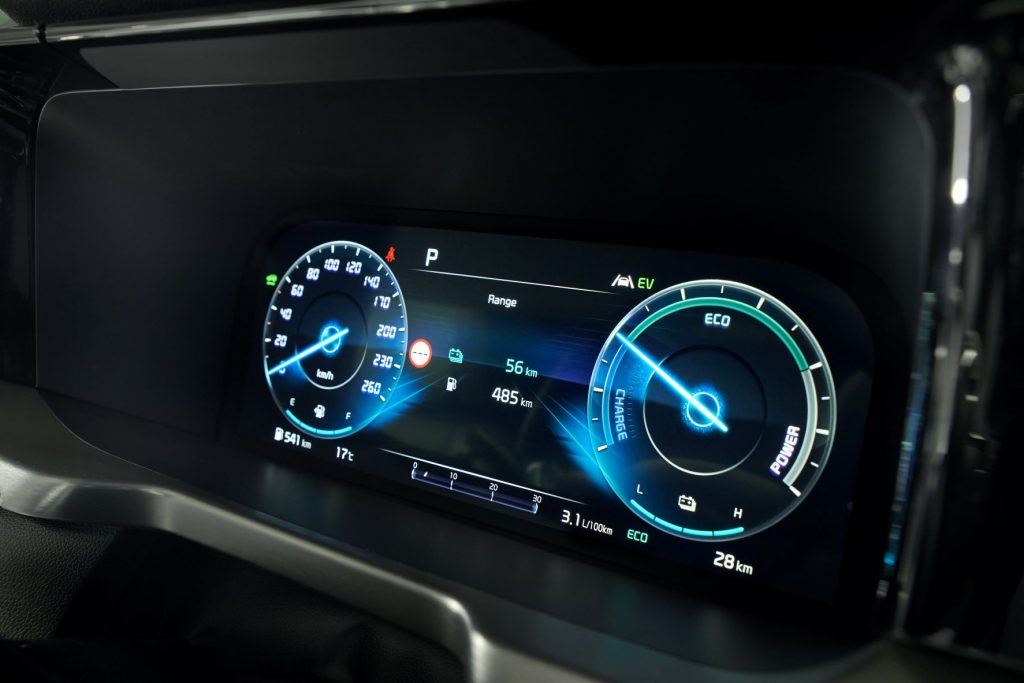
The focal point of the dashboard is the eye-catching ventilation stack that looks like something out of Star Wars.
A large 10.25-inch touchscreen and 12.3-inch digital instrument cluster includes monitors for various functions of the electric drive system.
The screen can be split in two for easy access to applications, vehicle information and multimedia content.
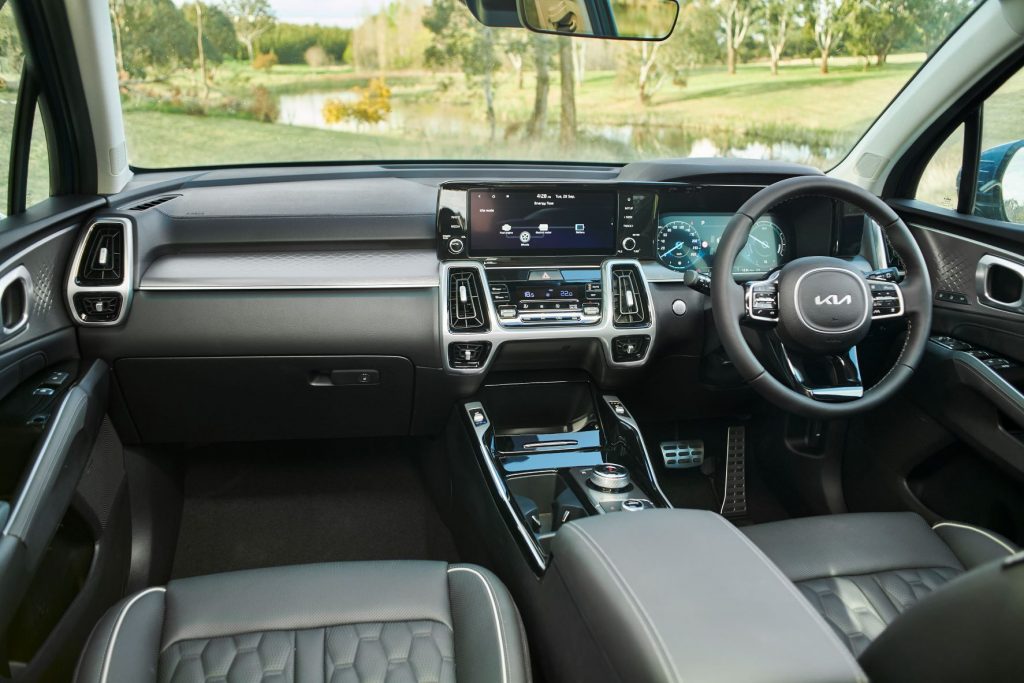
Powerful 12-speaker BOSE surround-sound audio is standard in GT-Line, with eight speakers, two tweeters, a centre speaker and subwoofer powered by external amplifier.
There’s also satellite navigation, DAB+ digital radio, AM/FM radio, Bluetooth and wired Apple CarPlay/Android Auto and USB ports for each seat.
GT-Line also comes with a colour head-up display that projects driving information on to the lower area of the windscreen.
The system displays alerts from the car’s numerous driver assistance technologies, details of vehicle speed, and turn-by-turn navigation instructions.
Rounding out the list is Mood Lighting, with seven ‘core’ colours and a driver to passenger intercom system.
Sorento scores a five-star safety rating, with seven airbags and has Autonomous Emergency Braking (AEB) technology with pedestrian, cyclist and vehicle detection.
This also detects oncoming traffic when making a turn at a junction.
Kia’s ‘level two’ autonomous driving technology, Lane Following Assist (LFA), controls acceleration, braking and steering depending on the vehicles in front.
It operates from zero to 180km/h, using camera and radar sensors to maintain a safe distance from the car in front, while monitoring road markings to keep the vehicle in the centre of its lane.
There’s also Rear View Monitor (RVM) with Reverse Parking Collision-Avoidance Assist (PCA), and Rear Cross-traffic Collision-avoidance Assist (RCCA).
However, the further back in the car that you are seated, the less protection offered in terms of airbags.
Second row passengers miss out on side airbags, while the third row misses out on both side and curtain airbag protection.
Highlights includes Nappa quilted leather, three-zone climate air, heated steering wheel, heated, cooled and power-adjust driver and front seats, with heated, slide and recline rear seats.
There’s also key fob parking, auto cruise control, auto high beam, 10.25-inch touchscreen, 12.3-inch digital instrument panel, 8.0-inch head-up display, keyless entry and start, LED headlights, panoramic sunroof, ambient interior lighting, 360-degree camera and power-operated tailgate.
The list goes on forever.
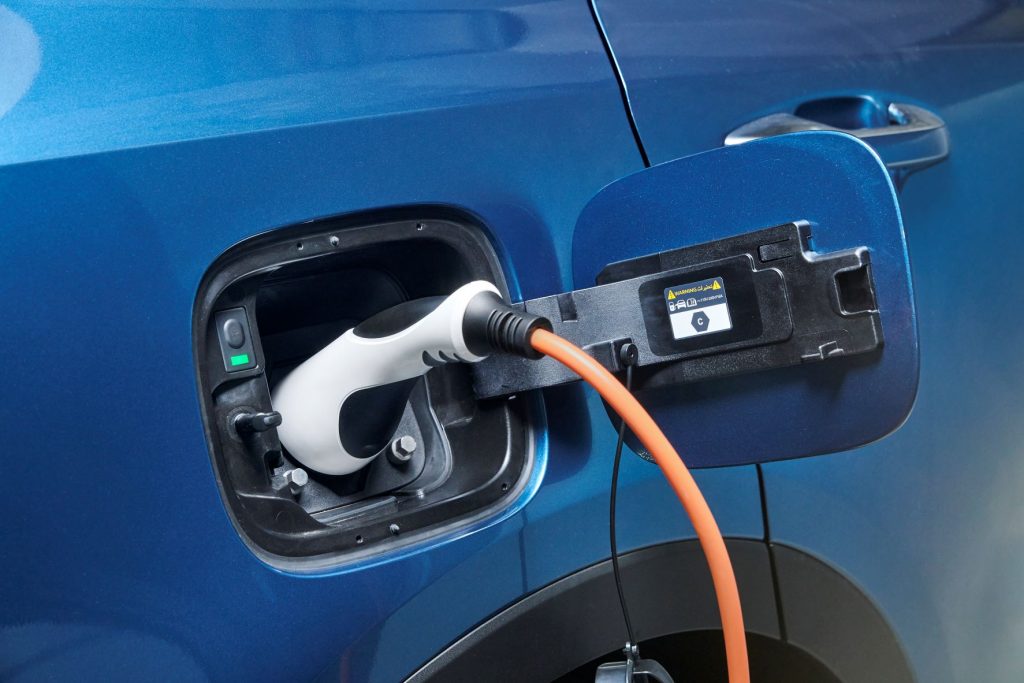
What’s it go like?
Sorento is big, comfy, easy to drive and light years from the Kias of old.
Power comes from a 1.6-litre turbocharged petrol engine combined with a 67kW electric motor, together with a 13.8kWh battery pack.
The combined output is 195kW of power and 350Nm of torque, with power transmitted to all four wheels via a conventional six-speed auto with paddle shifters.
Kia claims an all-electric range of 68km, but that’s under the old system.
Under the newer WLTP regime, which uses different test procedures, the figure is 57km.
Energy consumption is rated at 16.1kWh/100km.
The 140kg lithium-ion battery pack is located under the second row of seats and because the vehicle was designed with this in mind, Kia says it does not in any way compromise interior space.
In fact, although the new model is only 10mm longer at 4810mm, the wheelbase has grown by 35mm which means more room inside than before.
It’s also 10mm wider and, with all seven seats deployed, there is 32 percent more boot space.
The boot, however, is still smaller than the standard model.
A full-size alloy spare is supplied.
Design elements from other models include a new ‘shark fin’ element on its rear C-pillar, and sculpted body surfaces with sharp creases.
Electric and hybrid modes are interchangeable.
In hybrid or HEV mode, it operates both energy sources, the engine and the electric motor simultaneously.
With claimed fuel consumption of 1.6L/100km, we clocked up 1085km over a three-week period at a rate of 6.0L/100km.
With the battery fully charged it used marginally less than this – about 5.2L/100km – but to be honest we couldn’t be bothered constantly charging the thing.
The 1.6L/100km represents the amount of fuel consumed over a distance of 100km, under controlled conditions, minus the 57km contribution of the battery.
To get it, or even come close to it – you need a fully charged battery and to travel in EV mode for the first 57km.
The good news is that you can drive the Sorento like a run-of-the-mill parallel hybrid and it performs pretty well in this mode, with the battery rarely falling below 15 percent – charge or no charge.
This means performance always benefits from boost by the electric motor.
Only under full load does it feel a little unconvincing, like the four it actually is – wrapped in a big diesel body.
Here it is perhaps timely to mention the tow rating is a rather uninspiring 1350kg (with brakes).
PHEV comes with a Type 2 charging socket and is supplied with a Type 2 to powerpoint cable.
Charging this way takes up to six hours, or 3.5 hours if you install an optional 3.3kW wall charger.
If you’d like to make use of a faster, commercial charger such as those found at shopping centres, you’ll need to acquire another optional cable.
We became aware of this when we fronted up to charge point at a local shopping centre, only to find the cable supplied was not compatible.
It’s also interesting to note the flap covering the car charge port, located at the driver’s side rear, refused to open at first.
The trick is to give it a short, sharp prod instead of a gentle tap, then it will pop open – geez.
The vehicle is covered by the 7-Year unlimited kilometre warranty, 7-Year capped price service and 7-Year roadside assist.
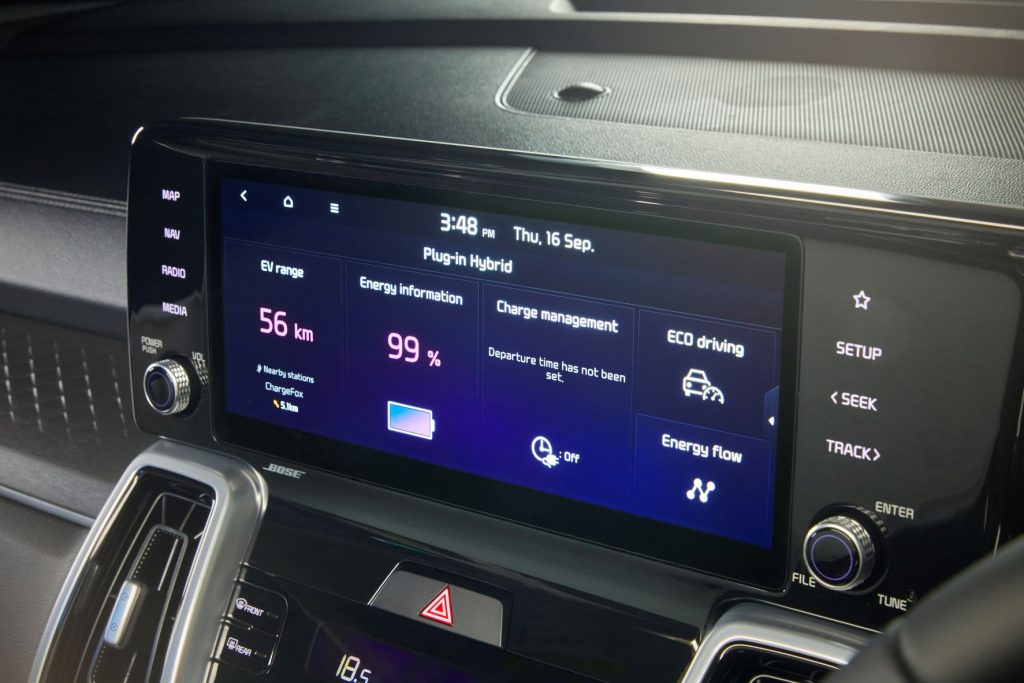
What we like
- Big and classy
- Upmarket cabin
- Lots of technology
- Satnav suggests charging stations
- Climate friendly or friendlier
What we don’t like
- Expensive
- Limited electric range
- Annoying lane assist
- Third row doesn’t get airbag protection
- Privacy screen awkward to remove and replace
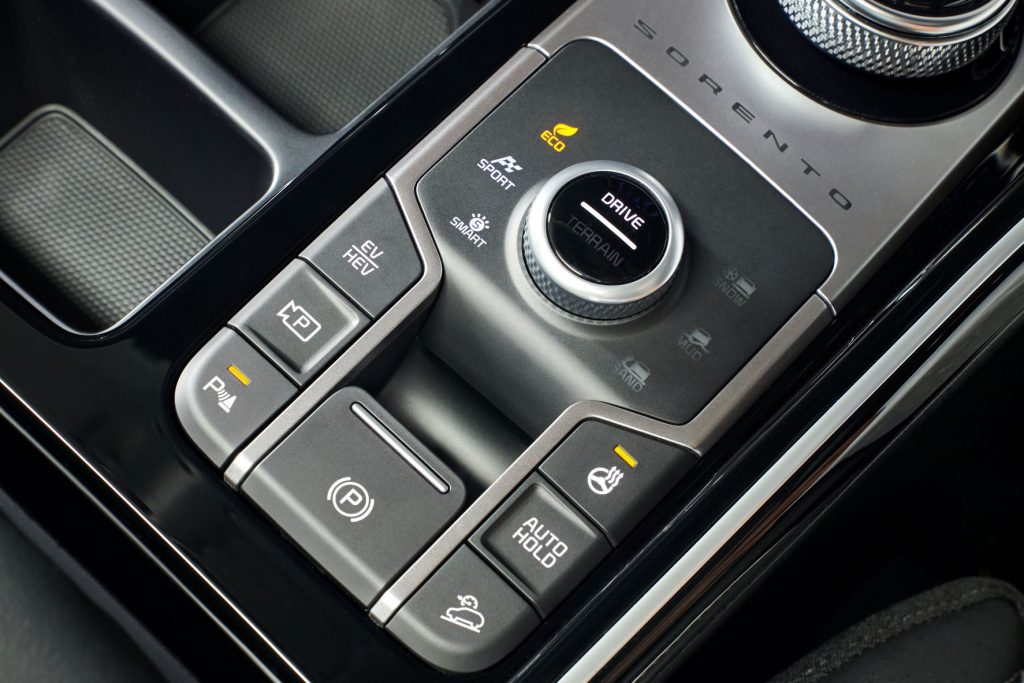 What over-50s drivers need to know
What over-50s drivers need to know
The latest Kia Sorento is a tour de force and I really wanted to like the PHEV.
But spending $82,000, almost $15,000 more than the diesel equivalent, for a car that will travel a maximum of 57km on electricity alone, just doesn’t make sense.
Add to this the prospect of having to charge the car frequently to achieve the claimed fuel consumption and it becomes even less attractive.
Other than that, the Sorento is an impressive vehicle and represents better value than buying a lower echelon Benz or BMW.
It’s big and it’s comfortable and comes with every conceivable option for the price and you can give yourself a pat on the back for doing your bit for the environment – even if it’s a little bit.
The cabin is first rate with quilted Nappa leather and three-zone climate air, mood lighting and soundtracks, which together with 12-speaker Bose audio makes for a very pleasant environment for long haul driving.
But remember, if you’re planning on towing a van or a boat, it is limited to a rather uninspiring 1350kg – that’s with brakes.
Over to you.
I can hear Darryl Kerrigan’s words now: “Tell him he’s dreamin’.”
If it was me, I’d take the diesel – any day of the week.
This review was prepared by Chris Riley and first appeared on cars4starters, https://cars4starters.com.au/
seniordriver comments
Here we go again! When it comes to EVs and PHEVs, buyers simply find it hard to look past the hefty price premium.
PHEVs do make good sense, but like Chris, we simply couldn’t be bothered with all the fiddling around to plug it in every time we arrived home. Consequently, our fuel consumption figure was even worse than his at 6.8L/100km. we’re sure it would have been higher had we driven it further using the internal combustion engine without bothering to recharge it… but seriously, for the minimal EV range, it just didn’t seem worth it.
And another regular bugbear with EVs comes up again: the very limited towing capacity. Most people who buy SUVs this size are buying them to do towing duty, but the PHEV can only tow 1350kg (braked) so that counts it out for many.
We didn’t realise the charging cable was an optional extra, but as we keep on saying, we haven’t been able to get any response from JetCharge or ChargeFox, so for us, charging at a public charging point isn’t even on the radar. We just hope that these two companies are more responsive to enquiries from their customers than they have proven to be with us.
It’s also an interesting fact that the PHEV runs 19-inch alloys rather than the 20-inch alloys used on the top-spec diesel and petrol models. We wonder if this may be a consequence of EVs needing different tyres. Perhaps the specialist EV tyres aren’t available in 20-inch? We’re looking into it.

